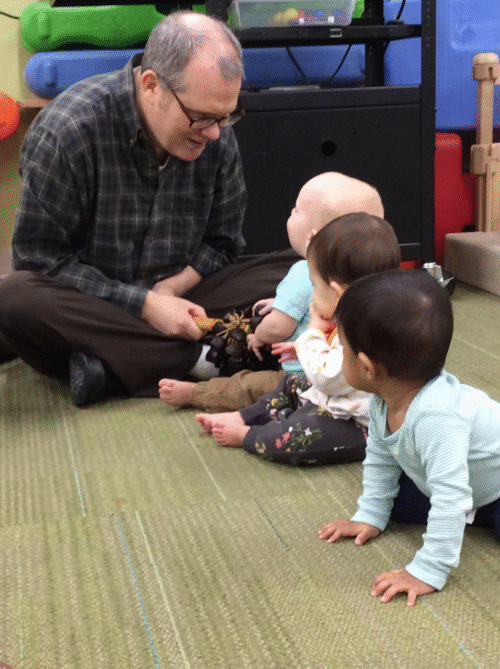
Topics
Can Young Children Learn to Identify Harmonic Progressions by Ear? Yes, They Can!
Dr. Eric Rasmussen, Chair, Early Childhood Music Department at Peabody Conservatory; educator, author, and researcher

Forty years ago, my serendipitous journey in music education took a fortunate turn when I met extraordinary researcher and author Dr. Edwin E. Gordon and learned of his groundbreaking work in Music Learning Theory (MLT). MLT is a comprehensive framework for understanding how children learn to comprehend the sounds in music (tonal, rhythmic, and harmonic elements). It emphasizes that musical understanding, like language acquisition, must develop by ear before written notation is introduced. Just as we learn our native language through listening and speaking before we learn to read and write, so it is, or should be, with music learning.
Unfortunately, many music teachers rely on a notation-first approach, teaching students to read music symbols before they have a strong foundation in listening, singing, and rhythmic chanting. Because we jumped the notation hurdle, often relying on math and puzzle-solving skills in addition to our propensity for learning music, we sometimes assume (incorrectly) that most children will have the same capacities.
The principles of MLT guided my teaching at OrchKids (the El Sistema-inspired program in Baltimore, MD, USA), and the results were extraordinary. My students, who faced typical inner-city challenges, exceeded even my highest musical expectations. Pre-K children sang songs in all but one mode and echoed complex rhythm patterns, including those in 5/8 and 7/8 time signatures. Kindergartners could easily read rhythm patterns in 2/4 and 6/8, skills typically found in a middle school curriculum. In later grades, they created, wrote, and read their own rhythm patterns.

Then came the absolute breakthrough in teaching harmony. By second grade, my students could recognize, discriminate among, and identify by name a wide range of harmonic functions by ear, not through theory. (See my Youtube video demonstrating this.) This astonishing level of achievement was made possible by a curriculum I developed based on the MLT principles of learning music elements by ear first, before written notation is introduced. I’ve seen that children as young as two years old can recognize, and sing, the roots to tonic and dominant chords. Three- and four-year-olds can sometimes learn additional chord functions in just a few minutes over two class periods.
Because harmony is fundamental for tonal understanding, it brings more meaning to melody and counterpoint. Harmonic understanding can be the anchor for musical interpretation, if we bring our awareness of it to make informed choices about phrasing, sections, form, and movements. Harmony is key to so much that is basic to the weight and flow of a piece of music that it should be more prominent in our curricula—especially since teaching it can begin as early as three years old!

Here’s how it works. Three-year-olds can tell you that “Mary Had a Little Lamb” doesn’t feel finished after the dominant chord (V7) on the word “fleece” in the lyric “Fleece as white as snow.” They recognize that the song only feels complete when it resolves to the tonic chord (I) on the word “snow.” Through repetition with other familiar songs, like “London Bridge” and “Wheels on the Bus,” they begin to recognize and predict this V7-I harmonic pattern, using simple words like “YES” when they hear the tonic and “NO” when they hear the dominant. We then introduce the subdominant (IV), which they recognize as a new sound, “UH-OH,” when they hear that chord.
This process, which I call “Harmonic Learning Sequence,” is built on a foundation of the children having heard and sung many songs that use these harmonic functions. From these musical experiences, children gain the readiness to create, compose, and improvise music—the most advanced skills in music. They do it by giving meaning to the sound, rather than using language and theory to explain something that is fundamentally aural in nature.
My experience at OrchKids proves that when we open ourselves to new ways of understanding how children learn music, we can achieve remarkable results and truly transform children’s capacities to be independent, creative, and lifelong participants in music. We can aspire to create a robust musical culture in which all people have the opportunity to be fully engaged musicians and connoisseurs of fine music.
To find out more about this method, and about Dr. Eric’s Book of Songs and Chants, visit TeachMusicToKids.com or contact Dr. Eric at [email protected]. To find out more about Dr. Eric, visit this link.

